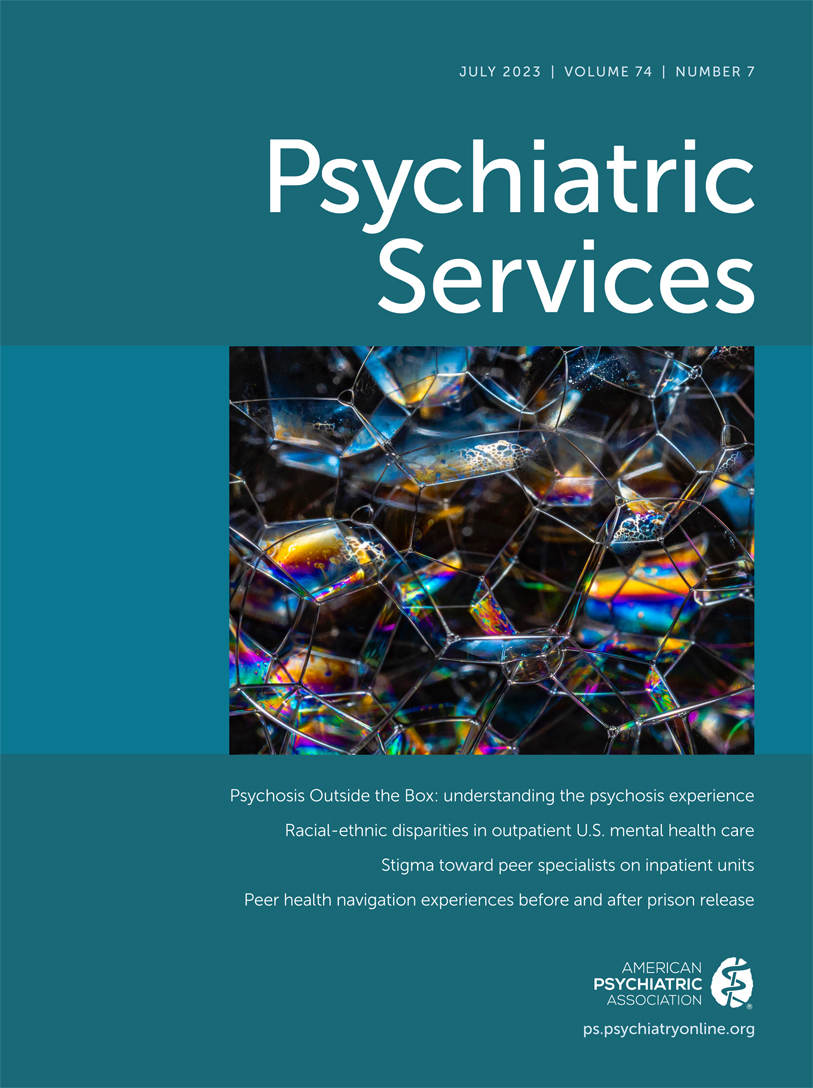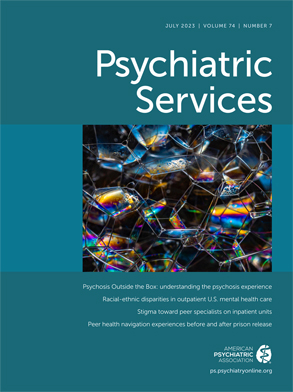The behavioral health workforce crisis is not new, but its urgency, coupled with the expanded public conversation about mental health in the wake of the pandemic, has propelled it into prominence. The crisis has many aspects, including marked disparities between workforce demographic characteristics and the population the workforce serves, insufficient attention paid to the voices of those with lived experience, geographic variation in availability, lack of clinical expertise for particular populations (i.e., youths, older adults), insufficient access to substance use disorder treatment, inadequate focus on prevention or early intervention, and a shortage of direct care staff (i.e., for residential settings). Because the recent increased need for services will likely be sustained, a thoughtful approach to building a workforce to meaningfully address future needs must be developed.
Framing the question as whether advanced practice providers (APPs), including physician assistants and advanced practice psychiatric nurses, can ameliorate the problem of limited mental health treatment availability obscures several critical aspects of the workforce crisis. Therefore, we argue that the debate about the expansion of the role of APPs in psychiatric care distracts from the more pressing problems of system redesign and that collective advocacy efforts are better focused on improving how care is delivered.
First, the workforce crisis is much more than a shortage of psychiatrists. In fact, the psychiatrist shortage has been protracted and its exacerbation anticipated (
1,
2). The shortages of direct care staff, therapists, and other providers are newer developments and, it could be argued, more vexing, particularly in relation to the care of children and adolescents. Given that the role of APPs in community settings is largely to prescribe medication, the argument that hiring more APPs is the best solution to the workforce crisis trivializes the multidimensional nature of certain populations’ needs and suggests that medication is the primary necessary intervention. This is particularly problematic for children and adolescents, for whom nonpharmacological interventions would ideally be the cornerstone of treatment, and when medication is required, it should be prescribed in conjunction with other treatment modalities. For instance, in a family struggling to maintain housing and meet other essential needs, a chronically chaotic home environment may contribute to a child’s development of emotional dysregulation. This situation warrants community services and case management, in addition to therapy, before medication is considered for the child. Although psychiatrists and APPs are important parts of the care delivery system, the full constellation of potential providers and treatments must be available to improve access and outcomes.
Second, the workforce crisis should prompt a reevaluation of traditional approaches to delivering care. When an individual presents for care, the collective default has typically been to offer medication and therapy. This cookie-cutter approach discourages personalized care and ties up treatment resources in inefficient ways. A more person-centered and resource-preserving approach might instead begin by characterizing the individual’s preferences and needs. Those requesting a particular intervention would ideally receive it, if clinically appropriate, given that outcomes are often improved when interventions are matched with preferences (
3). Beyond preferences, people need different interventions at different intensities and treatment durations; thoughtful characterization of clinical presentations can therefore lead to stratified treatment that both targets individuals’ specific needs and is delivered by the appropriate providers. For instance, individuals with very-low-acuity mental health needs might benefit from psychoeducation, guidance on self-guided tools, and periodic monitoring with a nonclinician. Those with mild or moderate conditions may respond well to support and basic interventions from a trained lay provider. Individuals with common conditions or an established relationship with their primary care provider might be well served in a medical context. Those with conditions of greater severity would usually be best served by team-based care that leverages professional expertise in the service of individuals’ goals. With such a stratified approach, mental health care systems might more effectively meet individuals’ needs and be more parsimonious in resource allocation. It is also important to consider whether those with similar needs may benefit from group modalities and to optimize participation through a variety of access points. For example, school-based mental health service availability is growing but remains highly underutilized. Powerful change can occur when options other than a one-size-fits-all approach are made available.
Finally, rather than mental health care organization administrators trying to decide whether to hire providers trained in a specific discipline, time and energy would be better spent grappling with how to organize treatment in public mental health settings. In many instances, such treatment can be most effective and most sustaining for staff when delivered by interdisciplinary teams working in close partnership with those served. True teamwork means determining what work is done by whom, how to coordinate within the team, and how to support therapeutic relationships in the context of team-based care. Extensive knowledge exists on how to create and sustain high-quality teams that can be adapted to public mental health settings. Although APPs can serve in a variety of roles, they will likely have their greatest impact as key players on high-performing collaborative teams rather than working in isolation to slowly chip away at growing waitlists.
For all of these reasons, proposing that APPs may solve the problems of mental health treatment access is to suggest a technical solution to an inherently adaptive challenge. Adaptive challenges are described as those of “wrenching organizational transformation” that cause deep disruptions to the status quo and, very often, distress (
4). In contrast, technical problems are those that can be solved with existing approaches and problem-solving processes (
4). The adaptive challenges of the behavioral health workforce crisis cannot be fixed by technical solutions only. Therefore, a discussion of technical solutions, such as expansion of APP scope, remains critical but should be undertaken in conjunction with consideration of the complex structural issues that contribute to the problem. Adaptive solutions that foster system redesign should be prioritized, and then how APPs’ roles can be most impactful in this new system may be clarified.
What might the necessary adaptive changes look like? Principles for leading adaptive work include moving between seeing the big picture and being in the thick of the action, identifying the adaptive challenges, maintaining attention, regulating distress, and sharing responsibility for developing solutions with those doing the work (
5). Given these principles, could active engagement with providers help stem the tide of clinicians leaving public mental health? Such active engagement might include eliciting why individuals do this work in the first place, asking them to identify specific problems, and then partnering with them to address these challenges, instituting meaningful mentorship, identifying professional goals and supporting staff in accessing what they need to achieve those goals, and giving staff a voice in reshaping the care delivery environment.
When considering adaptive changes to support the workforce, managers might also borrow from innovations in the mental health field. For instance, just as providers of clinical services should aspire to a recovery orientation, managers can maintain a hopeful and recovery-oriented approach to recruitment and retention. Similarly, the clinical goal of pursuing wellness instead of treating only illness, if applied here, could lead to emphasizing long-term sustainability (i.e., developing desirable, adequately compensated, and diversified job roles) and not only crisis management (i.e., hiring temporary staff). Principles of shared decision making might foster participatory management practices. The importance of evidence-based practices would suggest that clinicians and managers must learn to use and implement tools needed to navigate the current health care landscape. Finally, much as data are becoming critically important to track progress in treatment, data also could be used to guide workforce decision making and enable follow-up and accountability for decisions.
Concrete changes will always be needed to improve the lives of the clinicians doing the hard work of mental health care. But selective focus on these solutions—the technical changes, such as those related to the APP scope of practice—cannot substitute for the necessary adaptive work. Therefore, APP scope should be expanded in tandem with harder and more substantive systemic adaptations. However, bear in mind some caveats when considering the expansion of the APP scope of practice. For instance, APP training programs lack consistency in admission requirements, program duration, clinical contact hours, quality of clinical experiences, and opportunities for training in key populations. Although all APP training programs license their graduates to treat psychiatric patients across the lifespan, many graduates do not receive child/adolescent training experiences with the depth and breadth required to treat this population safely. Additionally, most new graduates need supervision in their first few years of practice, which is not always available.
This situation has no quick fixes. Fortunately, our professional identity is not tethered to quick fixes. Indeed, of all medical specialties, we in mental health are perhaps uniquely equipped to grapple with these complicated workforce challenges.

